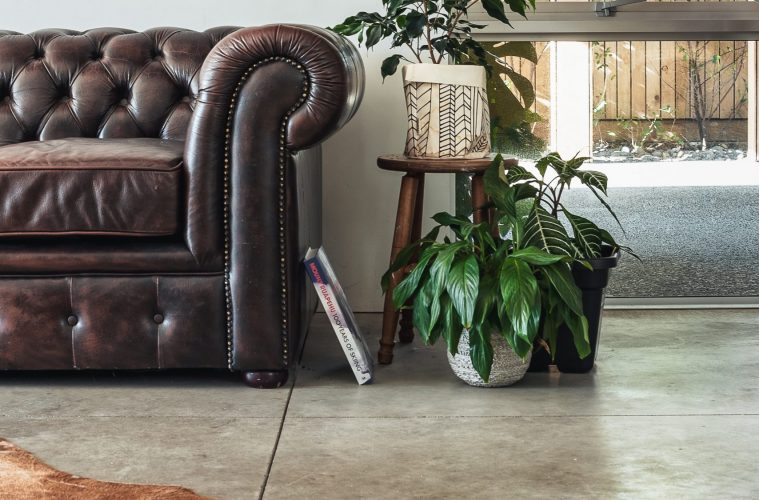Slick and durable, painting concrete is one way to take your floors from drab to fab.
One of the biggest ways to make a visual impact in a room is to transform the ground beneath your feet. If you’re ready to rip out your carpets and tiles feel outdated, we would like to propose another option: painting on cement. Ilaria Louw of Paintiques explains: ‘It’s a canvas waiting to be transformed – think of aged texturing or bold geometric designs’. The durability of cement adds to its allure – and its low-maintenance yet artistic character means it has found its way into many busy houses. Whether it’s your stoep, playroom, garage or kitchen – here’s how.
THE PREPPING
To start, you need to get your concrete floor into a flawless state:
1. Use concrete cleaner to clean off carpet glue.
2. Degrease floors with car-oil stains (like in a garage) by cleaning them with a mix of water and trisodium phosphate, and a metal brush. It will start bubbling (don’t panic) – give it 20 minutes before washing it off. This will allow the paint to adhere to the surface.
3. Fill flaws with cement filler.
4. Sand the floor with a pole sander and then vacuum in alternating directions until it’s smooth. 5 Do a moisture test. Take a clear piece of plastic and stick it on the concrete with tape. Leave overnight. In the morning, check for droplets on the inside. If there is moisture, allow more drying time. 6 Apply a masonry primer. If you want to save time, use a self-priming floor paint.
THE PAINTING
Picking your paint:
Take the location into consideration when choosing your paint. Water-based paints are the most affordable and well-suited to low-traffic areas indoors, while oil-based ones are a bit tougher, so they will suit patios and busy rooms.
For places that require a tough floor, opt for epoxy, a resin that hardens quickly and gives a great gloss. You can get 100% epoxy paint, but it is tricky to apply as it sets very fast. There are water-based epoxies (which are more commonly used in homes, as they are not as smelly) and solvent-based epoxies, but these contain lots of chemicals.
Getting the job done:
1. Pour paint on to the floor (in a dinner-plate-sized pool). Roll it out in a ‘W’ shape
for even distribution. You’ll need a putty knife to clean off bumps as you go.
2. Sand areas of badly adhering paint. Work over the trouble spots for the second coat.
3. Use a coat of concrete sealer to add gloss and give your floor gleaming longevity.
THE CREATIVE EFFECTS
A fun way of making a floor pattern is to use tape, says Ilaria. Paint your base colour, then mark out your design in masking tape. Paint over with a different colour, remove the tape and voila! But if you are painting a floor for the first time, Ilaria suggests trying out your skills on a small area first.
Stencils are fantastic for turning your floor into an artwork, but if you want to use your trusty Van Gogh freehand, then map it out first using grid lines, a ruler and chalk, says Ilaria.
[Image via Pexels]

